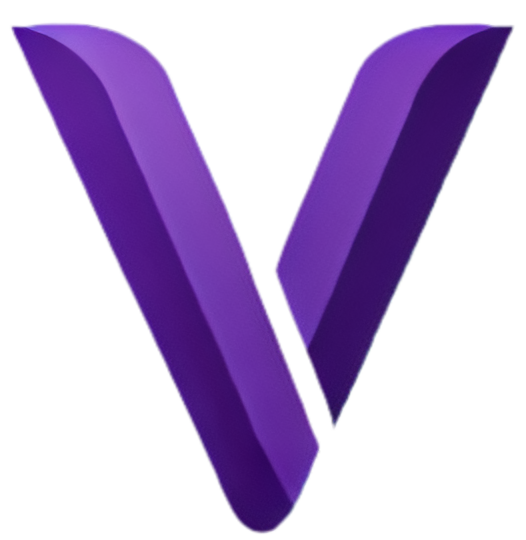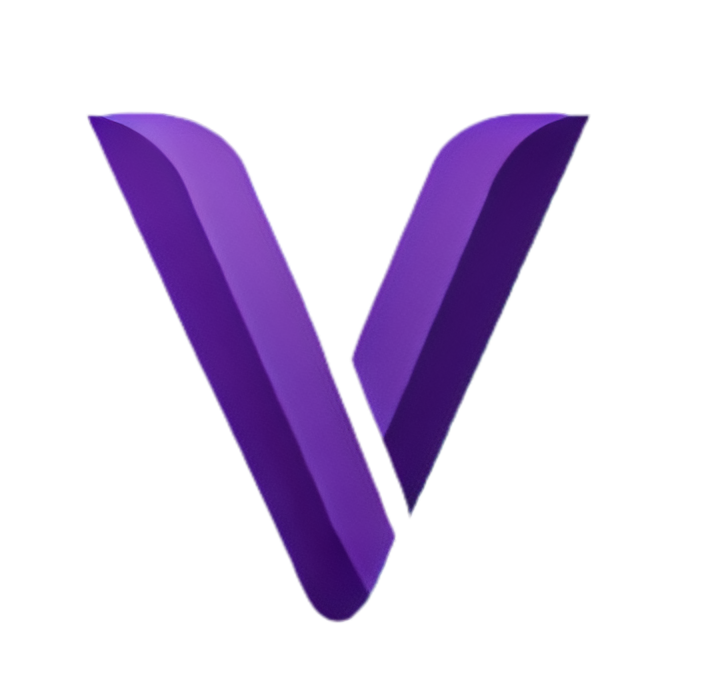The Frontier of Enterprise Blockchain: A Deep Dive into Hyperledger Fabric and Quorum

In an era defined by rapid digital transformation, enterprises face an existential need to optimize transparency, scalability, and trust across their operations. Blockchain is increasingly becoming the cornerstone of this transformation, but for decision-makers, the question remains: Which blockchain solution is right for enterprise deployment? Among the array of frameworks, Hyperledger Fabric and Quorum represent two of the most sophisticated architectures tailored for enterprise needs. Each brings to the table unique features that unlock previously unimaginable capabilities, but their design choices—and the profound implications of those choices—require a highly technical understanding.
Hyperledger Fabric: A Blueprint for Configurable Enterprise Blockchains
Hyperledger Fabric stands as an exemplar shift in permissioned blockchain architectures. Unlike public blockchain systems that prioritize open, decentralized trust, Fabric introduces a modular, permissioned approach that offers enterprise-grade flexibility. For businesses handling vast, proprietary datasets, Fabric’s ability to configure everything from consensus mechanisms to data access policies positions it as the ultimate platform for sector-specific blockchain deployments.
Modular Consensus: Customization Meets Performance
In public blockchain architectures, consensus mechanisms often combine several processes into a unified workflow. For example, in Ethereum’s original Proof of Work (PoW) system, block production and transaction validation were tightly coupled, as miners both proposed and validated blocks based on computational power. While Ethereum’s transition to Proof of Stake (PoS) introduced separation between block production (handled by selected validators) and transaction validation (done by attesters), the process remains relatively uniform across the network.
In contrast, Hyperledger Fabric deconstructs the transaction lifecycle, decoupling endorsement, ordering, and validation—a significant departure from typical blockchain workflows. This modularity is not a trivial design decision; it fundamentally alters how enterprises can optimize blockchain for specific use cases, allowing them to fine-tune these processes independently. This flexibility empowers organizations to create highly customized, performance-oriented blockchain networks that align with their unique operational requirements.
Endorsement Policies
In Fabric, transactions are first endorsed by a set of predefined peers. These endorsements are signatures that verify the transaction based on chaincode logic, ensuring that it follows organizational rules. This allows enterprises to embed complex business logic directly into the blockchain, ensuring that only authorized participants can endorse transactions.
Ordering Services
The ordering service is one of Fabric’s most revolutionary features. By allowing multiple consensus algorithms—Raft, Kafka, or custom implementations—Fabric abstracts consensus into a separate layer, enabling high throughput without bottlenecking validation. This abstraction is key to the platform’s ability to handle enterprise-scale workloads. Benchmarks have demonstrated that optimized Raft implementations can scale Fabric networks to handle over 20,000 transactions per second (TPS) in isolated scenarios—this throughput is comparable to some of the fastest centralized systems used in financial institutions.
Validation
After ordering, transactions are validated based on endorsement policies and the current world state versioning. The multi-phase approach reduces latency by 40-50% compared to traditional blockchain networks like Ethereum, particularly in systems requiring high levels of concurrency.
Private Data Collections and Confidentiality
Fabric’s architecture supports private data collections, a feature that enables participants to share data privately within subgroups of the network. This mechanism allows for cryptographic sharing of data only between authorized nodes without broadcasting it to the entire network. Deloitte, for example, has integrated Fabric for its KYC processes, reducing document verification time by 90% while ensuring compliance with global privacy standards such as GDPR.
Fabric’s ability to manage multiple privacy levels, while ensuring that all transactions are validated in accordance with global state, is a significant leap forward in blockchain design. The global state versioning guarantees deterministic finality even in high-concurrency environments, solving problems that have beset Ethereum in decentralized finance (DeFi) applications by preventing conflicting transactions.
Adoption in Industry: The Revolution in Walmart’s Supply Chain
The transformation of Walmart’s supply chain using Hyperledger Fabric is a case study in the sheer scale of enterprise blockchain. By integrating Fabric across 25 suppliers and 100 nodes, Walmart reduced the time it took to track the origin of produce from 7 days to 2.2 seconds. Additionally, this implementation reduced product recalls by 30%, saving the company billions of dollars in lost revenue annually. Enterprise software has never before been able to manage multi-party, multi-jurisdictional data flows with such fine-grained control over access and verification.
Advanced Statistics and Scalability
- Transaction Throughput: In controlled scenarios, Hyperledger Fabric has achieved 25,000 TPS with optimizations in ordering services and batch processing techniques. For comparison, Visa, one of the largest payment processors in the world, averages 1,700 TPS, showing the extent to which Fabric can outperform traditional centralized systems when configured correctly.
- Network Latency: With properly tuned Raft consensus, Fabric can reduce block confirmation times to as low as 0.5 seconds, making it suitable for high-frequency trading platforms where microsecond-level precision is critical.
Quorum: A High-Performance Blockchain Compatible with Ethereum
While Hyperledger Fabric prioritizes flexibility and modularity, Quorum is designed to leverage the Ethereum ecosystem while improving privacy, throughput, and performance for private enterprise use cases. Businesses accustomed to using Ethereum’s tools can now create high-performance systems without the drawbacks of the public infrastructure, such as expensive gas prices or protracted confirmation times.
Optimized Consensus Mechanisms
Quorum’s consensus algorithms—Raft and Istanbul BFT (IBFT)—are designed to deliver deterministic finality in private networks. This deterministic behavior contrasts sharply with Ethereum’s probabilistic finality, where blocks could be reorganized, causing uncertainty in transaction confirmation under PoW. While Ethereum PoS provides more secure finality through staking, Quorum’s private configurations remain optimized for enterprise use cases.
- Raft: The Raft consensus is leader-based, meaning that a single node is selected to propose and append blocks, reducing the computational overhead and complexity seen in consensus models like PoW. Benchmarks reveal that Raft implementations in Quorum can handle up to 2,000 TPS in real-world environments, with block times as low as 50 milliseconds.
- Istanbul BFT (IBFT): IBFT extends Byzantine Fault Tolerance (BFT) to Quorum, allowing the network to continue operating even if up to one-third of the nodes are compromised. This makes Quorum highly resilient, ideal for environments where adversarial behavior is a potential threat. Enterprises deploying IBFT on Quorum have achieved 1,500 TPS, which is more than sufficient for most financial and transactional applications.
Privacy and Performance Trade-offs
Quorum introduces the concept of private transaction management via its Tessera architecture. Tessera handles encrypted peer-to-peer communication for private transactions while ensuring the public state of the network remains consistent across all nodes. This architecture is highly advantageous for regulated industries such as finance and healthcare, where data privacy is paramount.
- J.P. Morgan’s Interbank Information Network (IIN): Leveraging Quorum’s selective privacy features, J.P. Morgan’s IIN processes up to 350,000 cross-border transactions daily, reducing the average settlement time from 2-3 days to less than 24 hours. Furthermore, the use of IBFT consensus in IIN ensures that even in the event of partial network failure, transaction finality remains guaranteed.
Quorum in Action: Komgo’s Disruption of Commodity Trade
Komgo, a blockchain-based platform for commodity trading, uses Quorum to digitize the traditionally paper-heavy process of trade finance. By leveraging Quorum’s private transaction capabilities, Komgo has reduced the time required to process letters of credit by 99.17%, transforming what was once a 10-day process into a 2-hour transaction window. The use of Quorum’s optimized Raft consensus has also increased transaction throughput by 5x, enabling the platform to handle billions of dollars in trades monthly.
Advanced Statistics and Real-World Performance
- Transaction Finality: Quorum, with Raft consensus, has demonstrated 99.99% transaction finality in tests involving adversarial environments where nodes were intermittently shut down. This level of fault tolerance is critical for banking systems that rely on continuous uptime.
- Gas Cost Elimination: By stripping away Ethereum’s public gas model, Quorum can process transactions at near-zero cost, a significant contrast to Ethereum’s gas fees, which can spike during network congestion.
Comparative Analysis: Hyperledger Fabric vs. Quorum
When considering which platform to deploy, enterprises must weigh the trade-offs between customization, privacy, and performance:
- Throughput: Hyperledger Fabric, with its decoupled ordering service and customizable endorsement policies, can handle more than 20,000 TPS in isolated cases. However, Quorum, while capable of handling 2,000 TPS, benefits from its direct integration with Ethereum tooling, which may reduce time-to-market for enterprises already working with Ethereum’s development environment.
- Privacy: Both platforms excel in privacy management, but Quorum’s Tessera transaction manager provides a more seamless experience for handling encrypted transactions in a multi-party environment. Fabric’s private data collections offer granular control but may require more complex configurations to achieve similar privacy guarantees.
- Latency: Quorum’s IBFT reaches latencies in the range of 50 to 100 milliseconds in optimized configurations, making it suitable for high-frequency, low-latency environments like securities trading or real-time settlement systems, while Fabric’s Raft consensus can reduce block confirmation times to less than 0.5 seconds.
- Ecosystem Compatibility: The primary benefit of Quorum is that it is compatible with Ethereum, allowing companies to use Solidity, MetaMask, and other Ethereum-native technologies. This simplifies integration for individuals who are already acquainted with Ethereum’s public design by providing businesses with a direct point of entry into the Ethereum developer ecosystem. In comparison, fabric gives more flexibility for highly specialized, extensively integrated corporate systems but requires more customized development.
The Future of Enterprise Blockchain
Businesses are embracing blockchain technology at a rate that is amazing. Based on research, it is anticipated that the enterprise blockchain market would grow from $9.6 billion in 2023 to $163 billion by 2027, mostly as a result of improvements in privacy, scalability, and industry cooperation. Hyperledger Fabric and Quorum, with their distinct architectures, are at the forefront of this revolution.
The decision of whether to employ Fabric or Quorum will rely on the particular requirements of each industry as businesses continue to navigate the hurdles of digital transformation. The highly adaptable, modular framework of Hyperledger Fabric can be the perfect answer for industries like healthcare and supply chain, where control over data access is crucial and governance is difficult. On the other side, industries such as finance and real estate, where transaction speed and data secrecy are critical, will find Quorum’s high-performance, privacy-enhanced Ethereum interoperability better suited to their demands.
These platforms provide businesses previously unheard-of chances to convert antiquated systems into incredibly effective, transparent, and expandable digital infrastructures. By doing this, they are redefining what is feasible in the realm of enterprise, not only resolving technical issues.

